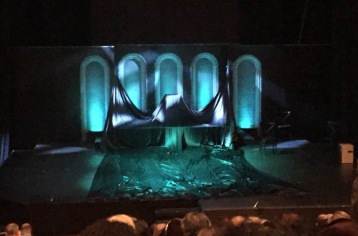Where is Antigone?
Whenever my brother comes to town we go see some dance. This time, we saw a flamenco version of the Greek tragedy Antigone by Noche Flamenca. It was a feast of sound, rhythm, and drama. It had dancing like I had never seen before. It held my attention from start to finish. I wanted to see it again. I wanted to talk with the director, choreographer. I think there are a lot of questions to ask about this piece.

I have a history with Antigone and ancient Greek tragedy. I’ve studied and taught about Antigone. I also wrote about tragedy in my dissertation. So my response is an extension of this history and heavily influenced by my field of study – rhetoric.
I’ve always been drawn to the story of Antigone as told by Sophocles. In 2015, there were 3 productions of the tragedy in the San Francisco Bay area; I saw two of them but only wrote about one. There is something timeless about this tragedy – we keep coming back to its multiple struggles between public and private rights; human laws and law of the gods; duty of kinship and religious obligation. The program notes explain that Antigona addresses the themes of “catharsis, issues of dictatorship, repression, loss, the strength of family and female empowerment,” which are also strong themes in flamenco. The notes end with a reflection on the character of Antigone as a “poster-child for civil disobedience and free speech.” The words behind the piece suggest that Antigona will show the strength of Antigone as a female hero through the language of flamenco.
I was disappointed.
Antigona begins with the story of Creon and his family, and it is not until the 6th scene (out of 15) that the Sophocles’ tragedy actually starts. Sophocles’ Antigone starts with her words, her voice. Antigona’s beginning features the male characters – Creon, Tiresias, Polyneices, Haemon. Even though Soledad Barrio dances a powerful Antigone, her part seems diminished somehow along with the politics that drives the drama.
Might Antigona rely too much on the language (and culture) of flamenco to tell Antigone’s story? I’m not ready to answer that question for I’d need more knowledge of flamenco not just as a dance form but as a way of thinking. It is a question worth asking especially when so many of us claim Antigone’s story as our own. What is gained? What is lost? Why does it (still) matter?
